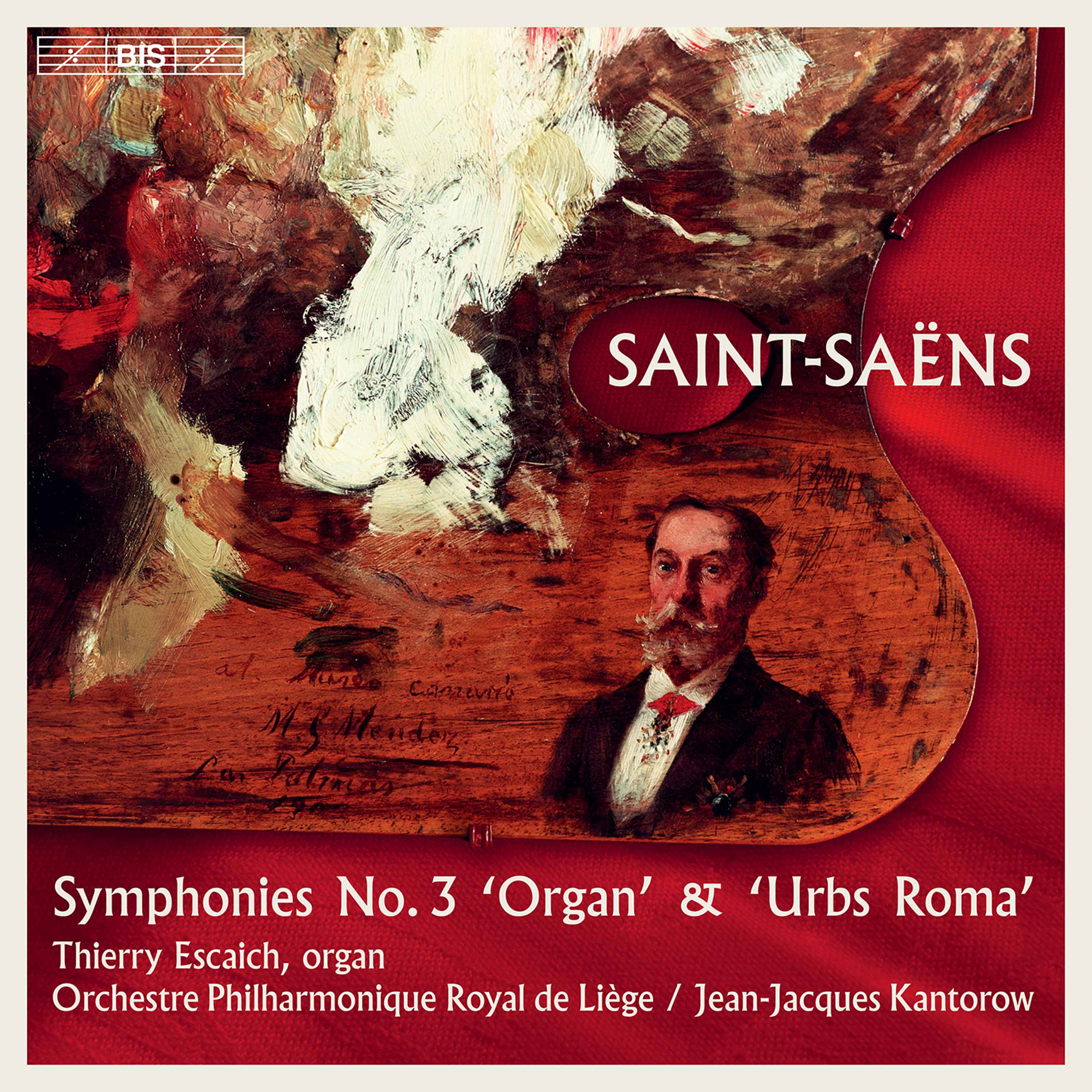Saint-Saëns Organ Symphony & Urbs Roma
Definitely worth it for the "Urbs Roma" Symphony; and one can't have enough "Organ" Symphonies, after all!

Saint-Saëns' music is always a delight, and here's a gift of a disc. It is the second of two recorded in Liège to commemorate th ecentenary of the death of Canille Saint-Saëns.
Despite the title of the disc itself, the first piece up is the Symphony in F, "Urbs Roma," written in 1856. composed in 1856 by a 21-year-old Saint-Saëns. It was written for a competition, and its title – ‘the city of Rome’ – was one of the subjects proscribed by the organisers. Saint-Saëns failed to leave a detailed programme, so ironically it is unclear how teh music related to the subject; he also left it outt from the catalogue of his own works. The score was unpublished until 1974. It is impossible not to hear the hand of the master-craftsman at work here. Just listen to the deft scoring, and the interplay between drama and play in the second movement Scherzo (the Liège orchestra is on fire here, and so accurate):
It has been suggested that the expansive first movement is the glory of Rome, that delicious Scherzo an evocation of Roman countryside and the "Moderato, assai serioso" slow movement the end of the Empire in the form of the funeral march. Perhaps not Saint-Saëns' most inspired music, it nevertheless has much gravitas in theis performance.
But it's the finale that is truly fascinating. A set of variations, possibly in the styles of various composers (Schumann in the third, Brahms ins the fourth for example), the implication is that this is a representation of the influence of Rome. The booklet annotator is right to suggest that this movement sometimes seem to tend towards teh balletic rather than the symphonic; and there is no grand symphonic close. But what a variegated journey thsi finale is!:
We're back on home turf for the "Organ Symphony" of 1886, one of the most loved of all symphonies. And this is a performance to have and enjoy, in that condictor Jean-Jacques Kantorow has clearly rethought the score from scratch. this as fresh playing as you're going to get in a recording studio. The first two movements are tracked together in this recording.
I haven't heard such a convincing interpretation since the old HMV Birmingham/Louis Frémaux performance. Add to that the lightness of texture that characterises Kantorow's reading and it is only joy that can ensue. Saint-Saëns' piece is notable, of course, for its inclusion of an organ; but its is also striking formally, with the long first movement actially functioning as an extended introdiction. to the Scherzo second:
The two final movement tracks link together too, resulting in a two-movement overall shape for the symphony. After that glowing slow movement (how good the Liège orchestra sounds here), that restless Scherzo sweeps all before it and leads to the entreance of the organ. I've heard more impressive organ entrances (it's the Grand Organ of the Salle Philharmonique in Liège), but that seems linked to the organ used as Thierry Escaich's playing in this finale is beyond reproach. And Kantorow's detail in the imitative passages is perfect ... :
Definitely worth it for the "Urbs Roma" Symphony; and one can't have enough "Organ" Symphonies, after all!
